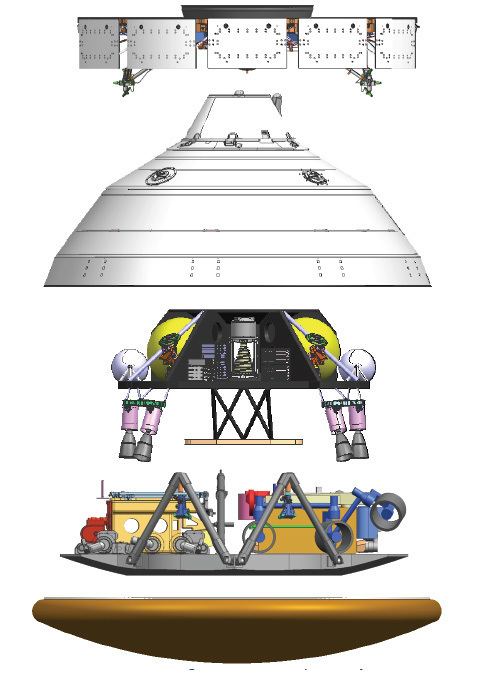 | ||
The Mars Exploration Joint Initiative (MEJI) is an agreement signed between United States' space agency, NASA, and Europe's space agency, ESA to join resources and expertise in order to continue the exploration of the planet Mars. The agreement was signed in Washington D.C. in October 2009, between NASA administrator Charles Bolden and ESA director-general Jean-Jacques Dordain.
Contents
In its hey-day it resulted in a synergy between NASA Mars Science Orbiter and the Aurora ExoMars program, the combination of a flexible collaborative proposal within NASA and ESA to send a new orbiter-carrier to Mars in 2016 as part of the European-led ExoMars mission. One of the goals was for NASA to provide to Atlas V launches for ExoMars, however in the early 2010s planetary exploration in the USA was not given enough money to fund this plan.
Under the FY2013 budget President Barack Obama released on 13 February 2012, NASA terminated its participation in ExoMars due to budgetary cuts in order to pay for the cost overruns of the James Webb Space Telescope. With NASA's funding for this project cancelled, most of ExoMars' plans had to be restructured.
History
Discussions between NASA and ESA began in December 2008, driven by the ESA Ministerial Council's recommendation to seek international cooperation to complete the ExoMars mission and to prepare further Mars robotic exploration missions. At the same time, NASA was reassessing its Mars Exploration Program portfolio after the launch of its Mars Science Laboratory was delayed from 2009 to 2011. This provided NASA and ESA with an opportunity to increase cooperation and expand collective capabilities. The U.S. and Europe have taken the view that they can achieve more together scientifically at Mars if they combine their expertise. And with both parties' current Mars programmes also experiencing financial pressures, the shared approach means the exploration schedule of a mission every two years can be maintained.
The executive board recommended NASA and ESA to establish MEJI, spanning launch opportunities in 2016, 2018 and 2020, with landers and orbiters conducting astrobiological, geological, geophysical and other high-priority investigations, and leading to the return of soil and rock samples from Mars in the 2020s.
Current status
Under the FY2013 Budget President Obama released on February 13, 2012, NASA was forced to pull out of joint Mars missions with Europe due to budgetary cuts, in order to pay for the cost overruns of the James Webb Space Telescope. The proposal for the Financial Year 2013 reduced the planetary science budget from $1.5bn to $1.2bn; Although planetary science was a loser in general, Mars exploration was singled out for particular cuts, receiving $360.8m, which amounts to a reduction of almost 40% from the FY2012 estimate. The cuts may plunge the field into its biggest crisis since the 1980s and is considered likely to lead to the loss of up to 2,000 high-tech jobs.
On February 29, 2012, the U.S. House Appropriations subcommittee that oversees NASA funding, rejected the space agency's request to begin shutting down its joint Mars-exploration effort with the European Space Agency, until the issue can be debated thoroughly. The committee believes that "so radical a change in policy needs and deserves to be fully considered by a process that is more rigorous and more inclusive than the reprogramming notification."
Regardless of the final outcome by the House Appropriations subcommittee, NASA will continue with its own Mars exploration projects: Mars Science Laboratory, MAVEN orbiter, Mars 2020 rover, and InSight lander.
Missions
In its original version, the MEJI vision would have encompassed the following launch opportunities:
